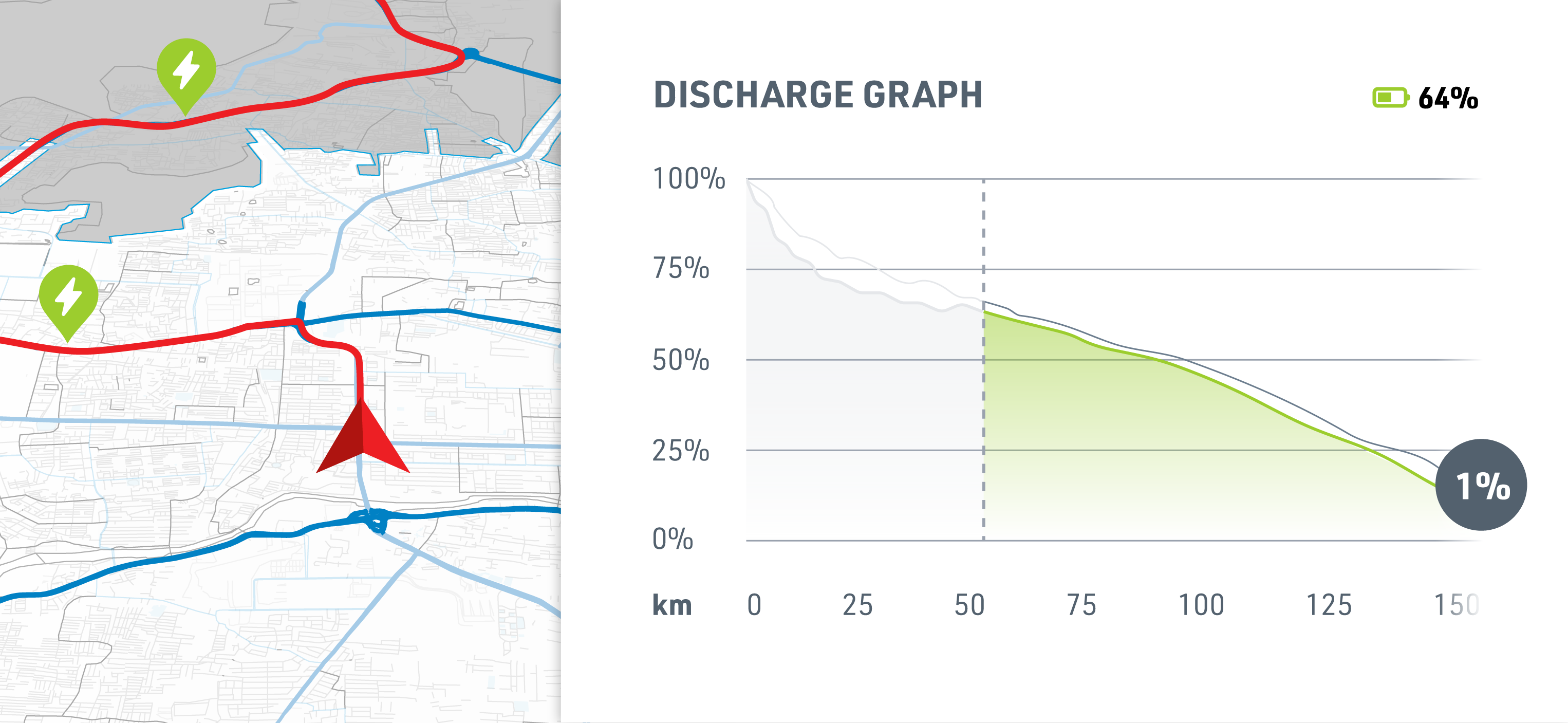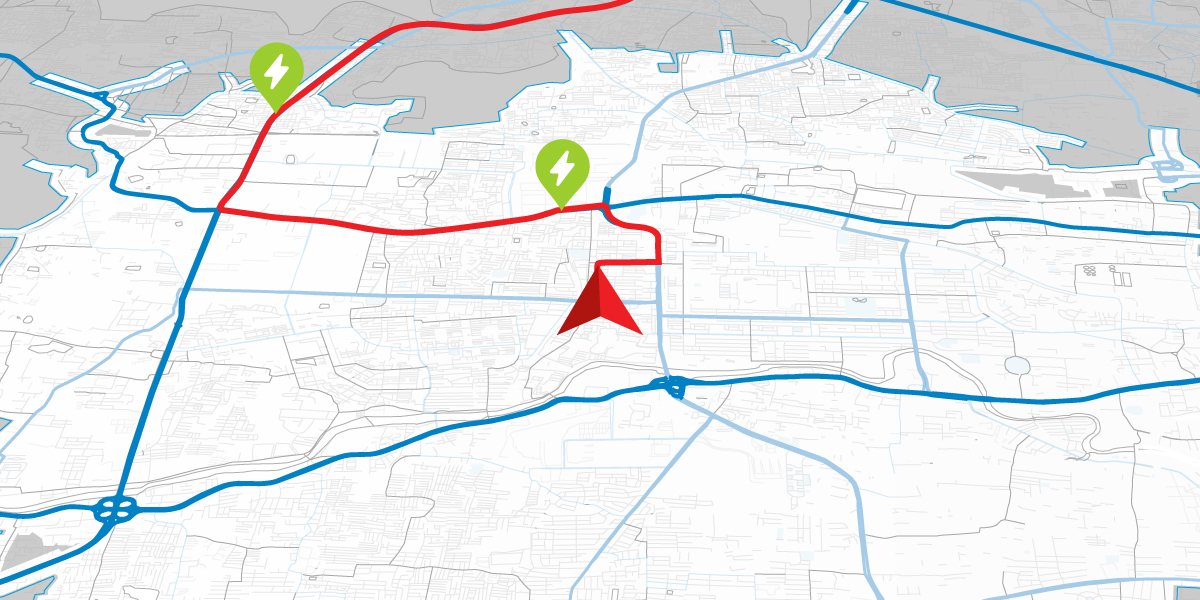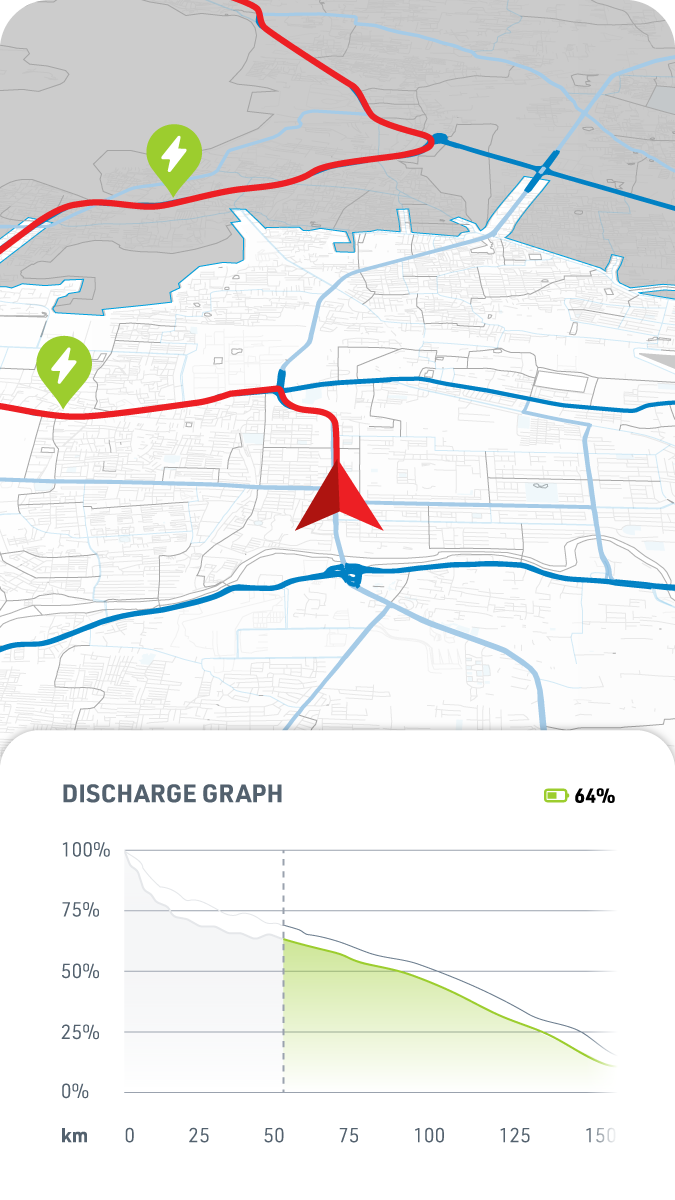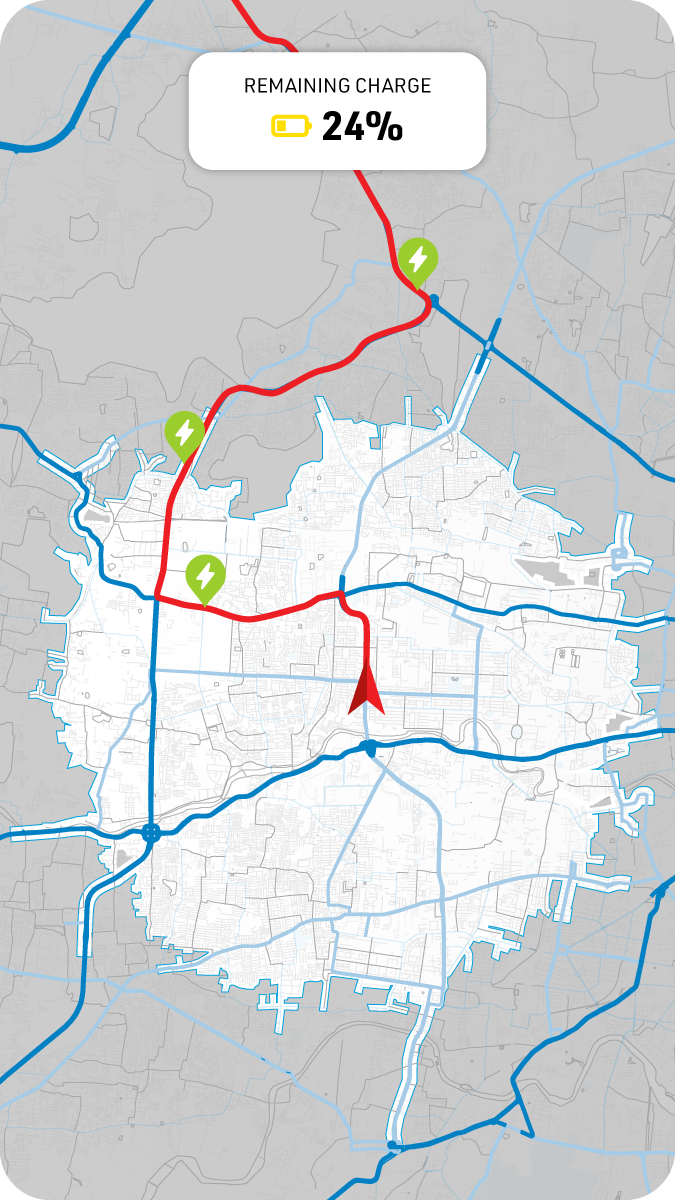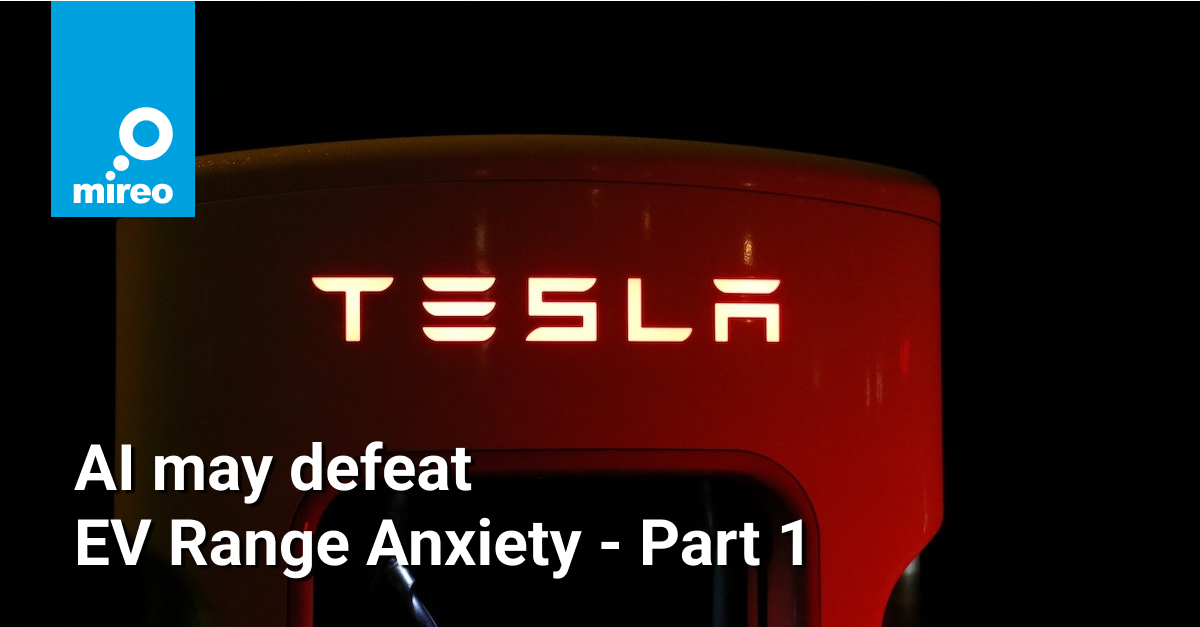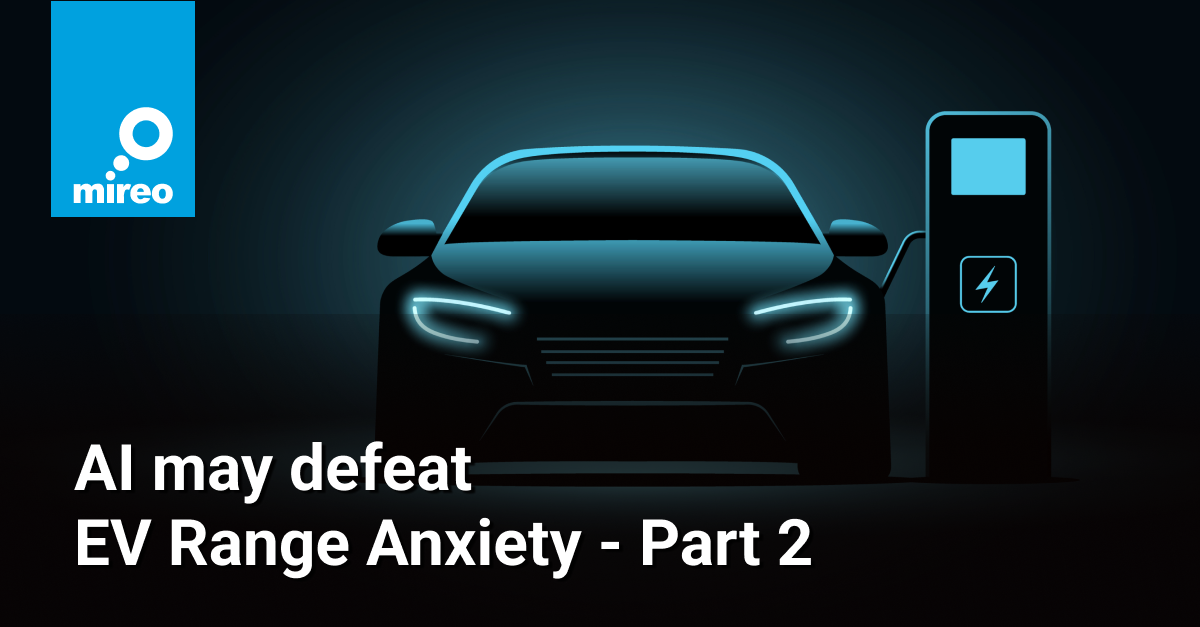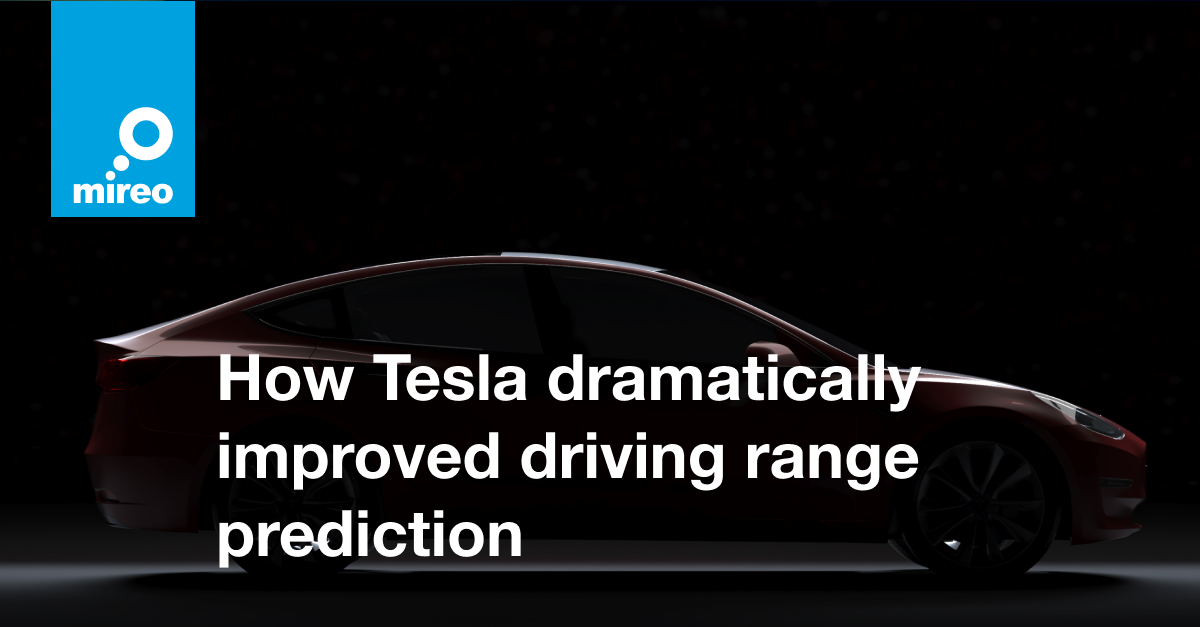Let’s describe what it really looks like to plan and drive a 1,000 km trip with an EV!

This winter, we made a 1,000+ km round trip from Zagreb, Croatia, to Maranello, Italy, with our Tesla Model 3. Specifically, we wanted to benchmark our EV GPS navigation to this leading ecosystem.
The very same route to Maranello we’ve driven numerous times with a gas car. Now, we wanted to see whether we could make the journey as similar as possible to a gasoline car drive - to reach the most negligible overhead of charging time and, naturally, not run out of battery.
Tesla Model 3 obviously cannot make this 570 km one-way trip without stopping to charge. We have to map out charging pit stops in advance, and we can summarize our requirements on route and charger selection as follows:
- Fast charging
- Charger compatibility
- The actual range may vary
- Charging efficiency
- Always have a plan B
We want to spend as little time as possible on charging, aiming at 20-30 minutes per charger; therefore, we prioritize fast chargers.
We want to charge exclusively on the Tesla Supercharger network. Unlike standardized gas-fuelling nozzles, EVs have four main charging plug types, and carmakers typically support only one or two. However, if not possible, we're more than willing to charge on any other charger with a compatible plug if push comes to shove, even if it's a slow charger, as long as we keep the engine running.
Our Tesla has a 423 km advertised EPA range (range measured on 55% highway and 45% city driving), which based on our driving experience, translates to approximately 250 km of highway driving in cold weather. Achieving the advertised range requires perfect conditions, including temperature, driving speed, road slope, etc., and realistically one can never get it all perfect.
Therefore our 570 km one-way trip would need at least 3 charging stops, possibly even more. Although it might seem feasible to make the entire trip with just one charge, it's only sometimes necessary to charge the battery fully. Charging from 20-80% takes roughly the same time as charging from 80-100%, so we'll aim to keep the battery in that range. This practice not only extends its lifespan, but also speeds up charging time
Of course, these are the ideal requirements. We’re aware that the situation on the road can dramatically change, and we’re prepared to make compromises. Being left on the highway waiting for roadside assistance is not an option.
To make charging at our destination as easy as possible, we'll research charging options and pre-download any necessary apps.

